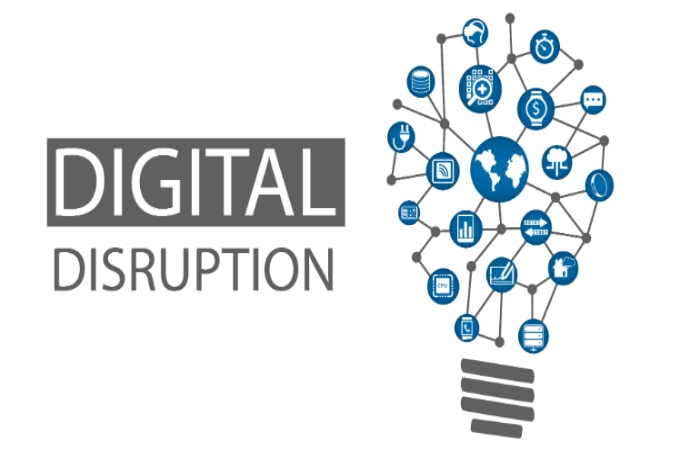Currently, different concepts are gaining value thanks to technological evolution. Digital transformation is one of the most used by large corporations, which intelligently incorporated it into their strategies. However, each action and investment caused many consequences, hence the importance of digital disruption (examples ). Do you know what it is about and its relationship with digital transformation? Are they the same? In this post, we will express everything.
Table of Contents
What is Digital Disruption?
It refers to the consequences of interrupting or changing new technologies’ evolution. The term is widely used in the business world since it has taken as a change that sets a precedent.
However, it has also left a significant mark on our society. Many innovative ideas and businesses have made a difference unconventionally. One of the situations contributing to its growth is the COVID-19 pandemic, representing the most significant challenge that all companies have faced simultaneously.
Some have taken a 360 ° turn, betting on technology to save their income. For their part, others have directed him to improve his position on social networks and in-home delivery. This fact has undoubtedly managed to have the most incredible digital disruption: examples of today’s creativity and potential.
Digital Disruption or Digital Transformation? What are the Differences?
To better visualize the differences between the two, it is best to explain the digital transformation. It strategically uses technology and its tools to improve internal processes and service. It takes quality and efficiency very seriously, both in achieving objectives and in productivity and time management. For its part, digital disruption refers to the consequences that technological advances cause in companies and the market in general.
Both are closely related because the digital transformation drives the business sector to migrate to digitization. Digital disruption is one that, after these changes, generate a new paradigm in the market, getting new business models to open and provide a different alternative to what is commonly known.
Not everything includes digital disruption: examples of successful businesses are like that since it also has negative aspects of the changes. One of them is that thanks to digitization, labour has become expendable in many companies. Also, companies seek their customers to use their online platforms, which is harmful if people do not know how to handle it correctly and protect themselves from cybercrime.
Both scenarios have still allowed the industry to grow and evolve, thus becoming positive changes for the business sector.
We can conclude that digital transformation precedes disruption, being the trigger for a series of events, which are part of the evolution of the market.
Digital Disruption: Examples of Global Impact
Thanks to industrialization, changes in our society have been going at great speed. No more than 20 years ago, the mobile phone was limited to calls and SMS. Today we can take photos, video calls, meetings, and store files, all within reach of your mobile.
For this reason, below we will present the highlights of digital disruption: current examples and a bright future:
The Robotic:
A panorama which reminds us of the films of the 80s, about the importance that this technology could have on civilization. However, even though many robots cooperate in many companies’ tasks and tasks today, they are underused, although not for long. It will likely be different in a few decades, even by 2030. Being a project in progress with excellent visibility, we now have robots that serve food, move heavy machinery, and are of great help in very basic tasks.
Artificial Intelligence:
AI has come to become a crucial part of many business models: Chatbots, simulators, high data processing, analysis of massive information, and providing more accurate information. AI is very present in our days, and it evolves, surprising us more every day. Its adaptability for different sectors has allowed this area to have such a boom, acceptance, and investment worldwide.
Automation of Cars and Drones:
It is a project that wants to reduce the number of car accidents and that works alone when it is operational. Even drones have made home delivery reality and not a fantasy. However, the fact that a drone is equipped with a camera makes it very useful. In sectors such as agriculture, they are used to monitor plants’ growth.
The Internet of Things:
Imagine a world where our devices don’t need all of our intervention. Well, this is what the Internet of Things allows, giving our teams more usefulness so that our participation is scarce, which gives us more time to invest in other tasks.
Cloud Computing:
Cloud storage is a before and after. Pendrive, CDs, and hard disk are no longer as necessary as early for many activities. With cloud storage, it is possible to save all your information in one place and access it from any device with an internet connection. This ease has allowed cloud computing to progress, especially for companies who invest a lot in leaving their information in a secure place.
3D Printing:
Although it was an invention that began by merely recreating different objects, now its evolution allows us to go much further. We can play with food, clothing, parts, and other items to reproduce all these products and artefacts. So it is a help for various sectors and companies immersed in digital transformation. It has managed to create a digital disruption: examples such as HP, which has verified the excellent investment that this business model represents for them.
Advantages and Disadvantages for Companies
As we have seen before, digital disruption has brought many benefits to our society. However, to determine what these substantial changes entail, we present the advantages and disadvantages:
Advantage:
- Evolution of the digital market to sophistication and attention to the customer experience.
- Improves the commercial vision of business people, managers, and executives.
- Focus on digitization, tools, applications, and the use of social networks.
- Way of working better with more resources to facilitate the staff’s tasks.
- Increase in increasingly competitive business models and with more ambitious proposals.
- More excellent proximity to customers, increasing the scope of the company.
- Demand for free cooperation between brands.
Disadvantages:
- High competitiveness between large and small companies in the same sector.
- Risks in decision-making if the focus on incorporating digital tools have not taken place but has done strategically.
- Massive collaborations generate discrepancies in old business models, where all parties focus on their economic investment.
Also Read: What is Hybrid Cloud?









